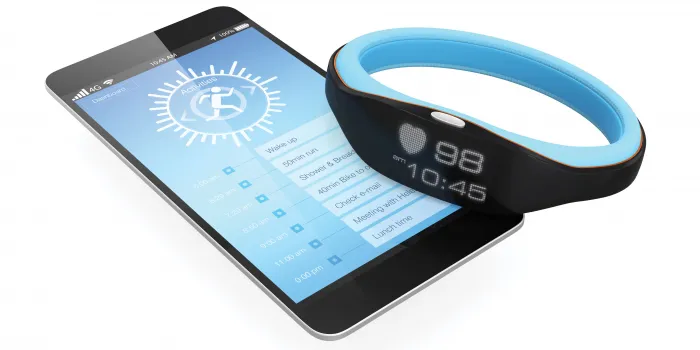Exercising at the right intensity not only improves fitness but also helps avoid injury. However, anyone with a bleeding disorder must be careful not to push too hard during exercise. “Overexertion could cause a bleed, a sprain or a strain if the muscles around the joint are not strong,” says physical therapist Alice Anderson, PT, DPT, PCS, a pediatric clinical specialist at Dallas home health agency Therapy 2000 and a former member of the National Hemophilia Foundation’s Physical Therapy Working Group.
Heart rate monitoring
One way to monitor your physical activity level is your heart rate. First, estimate your maximum heart rate using this simple formula: Subtract your age from 220. (For example, a 40-year-old person’s estimated maximum heart rate is 180 beats per minute: 220 minus 40.) According to the Centers for Disease Control and Prevention, exercise performed between 50% and 70% of maximum heart rate is moderate intensity; a heart rate between 70% and 85% of maximum is considered vigorous exercise.
There are several ways to keep tabs on your heart rate as you exercise, from newer digital tools that provide constant, real-time feedback to old-fashioned techniques requiring no technology. Choose one of the reliable methods below and get the most out of your workouts without overdoing it.
High tech
A Bluetooth-enabled heart rate monitor straps to your chest and communicates with your smartphone or smartwatch, so you can keep a constant eye on your heart rate.
Old school
Find your pulse at the base of your thumb, count the beats for 15 seconds, then multiply by four. That’s your current heart rate in beats per minute.
Talk test
If you can comfortably talk or recite something aloud while exercising, you’re in the moderate range. If you can’t, you may be pushing yourself too hard. If you’re able to sing—which requires more breath than talking does—you should probably pick up the pace.
Unreliable
Don’t put much stock in the built-in heart rate monitors on your gym’s cardio equipment, such as elliptical machines and stair climbers. Studies show they’re not very accurate.
Playing it safe
The new edition of NHF’s exercise guide, Playing It Safe, assesses the risk level of numerous activities. Once you choose an exercise that’s safe for you, start out easy and build your endurance gradually. If you’re new to working out, or coming back after a long break, your heart rate will spike quickly and your muscles will tire easily, so be careful not to overdo it.
Keep in mind that as your aerobic fitness improves, you’ll need to work harder to raise your heart rate. But this increased exertion might not be good for your joints. Don’t worry if you need to lower the intensity.
Give yourself a break between workouts so your body can recover and be ready for the next bike ride, weightlifting session or yoga class. But even on these “off” days, try to keep active, says Anderson: “You need basic physical activity every day. Walk the dog, garden, take the stairs if you don’t have leg problems.”

